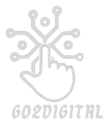In the fast-paced realm of marketing, two distinct methodologies vie for attention: Traditional Marketing and Digital Marketing. Each offers unique avenues for promotion, catering to diverse audience segments and business objectives. In this comprehensive guide, we delve into the depths of these strategies, highlighting their disparities, advantages, and suitability across various industries.
Introduction: Navigating the Marketing Landscape
In today’s interconnected world, businesses must navigate a complex marketing landscape to stay ahead of the curve.difference between Traditional Marketing and Digital Marketing stand as stalwarts in this dynamic arena, each presenting its own set of opportunities and challenges.
Reach & Targeting: Casting the Net vs. Precision Aim
Traditional Marketing casts a wide net, utilizing mediums like print, radio, and television to reach a broad audience. Contrastingly, Digital Marketing employs precise targeting techniques, leveraging data to tailor messages according to geography, interests, and demographics.
Cost: Balancing the Budget
While Traditional Marketing may incur substantial costs, particularly in print or television advertising, Digital Marketing offers a spectrum of cost-effective solutions. From pay-per-click campaigns to organic social media, digital avenues often provide more budget-friendly options.
Interactivity & Engagement: Passive Viewing vs. Active Participation
Traditional Marketing often entails passive viewing, with limited scope for interaction. Conversely, Digital Marketing fosters engagement through likes, shares, comments, and reviews, fostering a dialogue between brands and consumers.
Flexibility & Agility: Adapting to Change
In the realm of Traditional Marketing, campaigns may be rigid, with limited room for adjustments once launched. Digital Marketing, however, thrives on agility, enabling real-time modifications based on performance indicators and feedback loops.
Measurability & Analytics: From Insights to Action
Traditional Marketing metrics like brand awareness can be challenging to quantify accurately. In contrast, Digital Marketing offers a plethora of analytics tools, providing actionable insights into user behavior, conversion rates, and return on investment.
Tangibility & Brand Presence: Physical vs. Virtual Impressions
Traditional Marketing leaves tangible impressions through print advertisements and billboards. Conversely, Digital Marketing creates virtual brand experiences across online platforms like social media, email, and websites.
Global vs. Local Impact: Expanding Horizons
Traditional Marketing can have a significant local impact, making it ideal for businesses targeting specific geographic areas. In contrast, Digital Marketing facilitates global reach, empowering organizations to connect with diverse audiences worldwide.
Advantages of Traditional Marketing: Despite the digital shift, Traditional Marketing still offers advantages such as broad audience reach, flexibility, and tangible brand materials.
Relevance of Traditional Marketing: Traditional advertising remains relevant, especially for niche markets and industries inaccessible through digital channels.
Challenges in Digital Marketing: Organizations grapple with the ever-evolving digital landscape and competition from industry giants with substantial marketing budgets.
Measuring Digital Marketing Success: Key metrics like conversion rates, website traffic, and engagement metrics help gauge the efficacy of digital marketing campaigns.
Suitability of Digital Marketing: While digital marketing holds promise for many businesses, its effectiveness varies based on industry, goals, and target audience.
Conclusion: Striking a Balance
As businesses navigate the intricacies of marketing, striking a balance between Traditional Marketing and Digital Marketing emerges as a key strategy. By harnessing the strengths of each approach, organizations can craft holistic marketing strategies that resonate with diverse audiences and drive sustainable growth in an ever-evolving marketplace.
In conclusion, the interplay between Traditional Marketing and Digital Marketing unveils a rich tapestry of possibilities, shaping the future of marketing in the digital age.
In the digital age, the choice between Traditional Marketing and Digital Marketing is pivotal. While Traditional Marketing offers broad reach and tangible impressions, Digital Marketing provides precise targeting, real-time analytics, and cost-effective solutions. By embracing the strengths of both approaches, businesses can navigate the complex marketing landscape, fostering engagement, driving growth, and maximizing their impact in the digital era.


